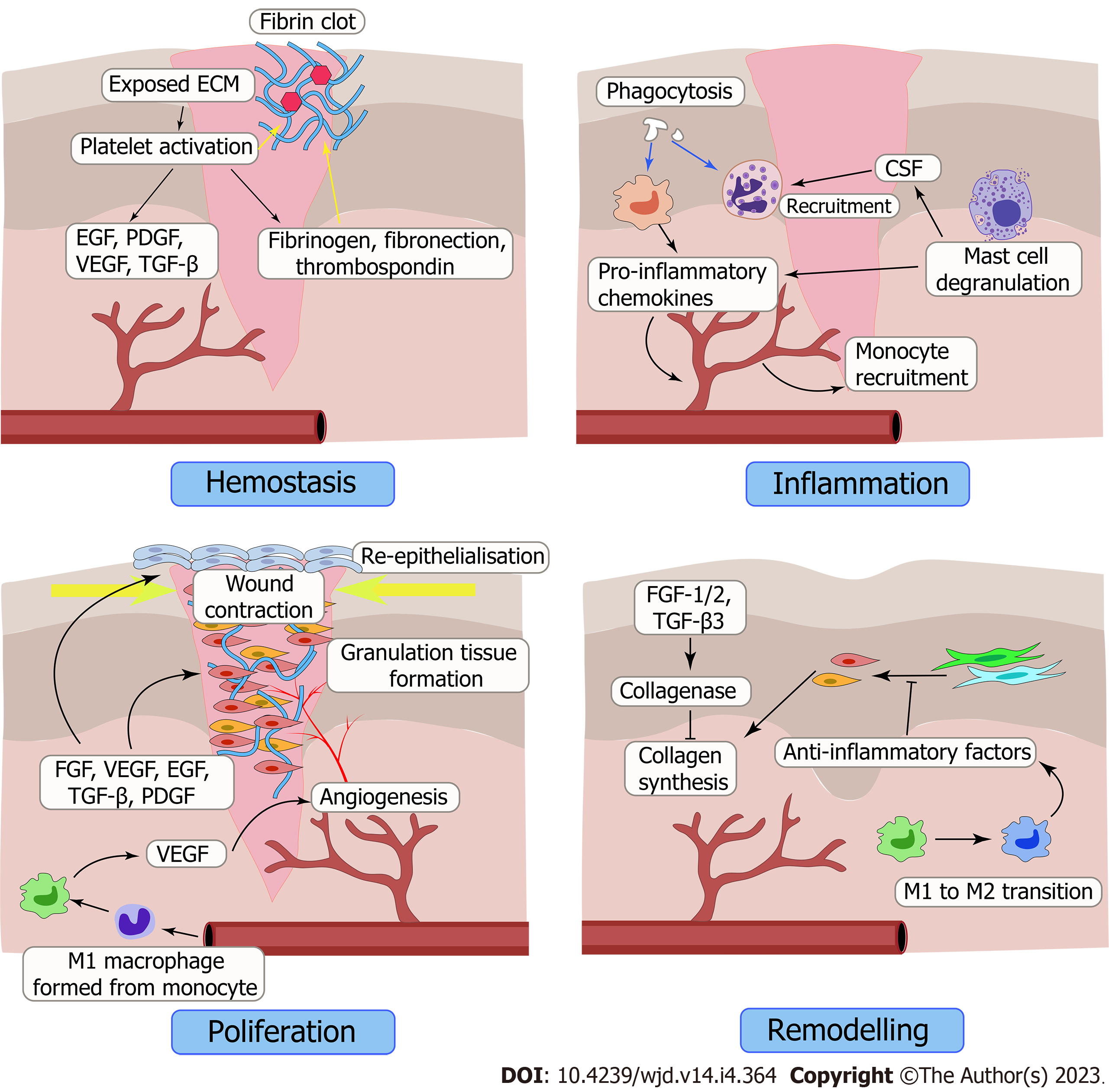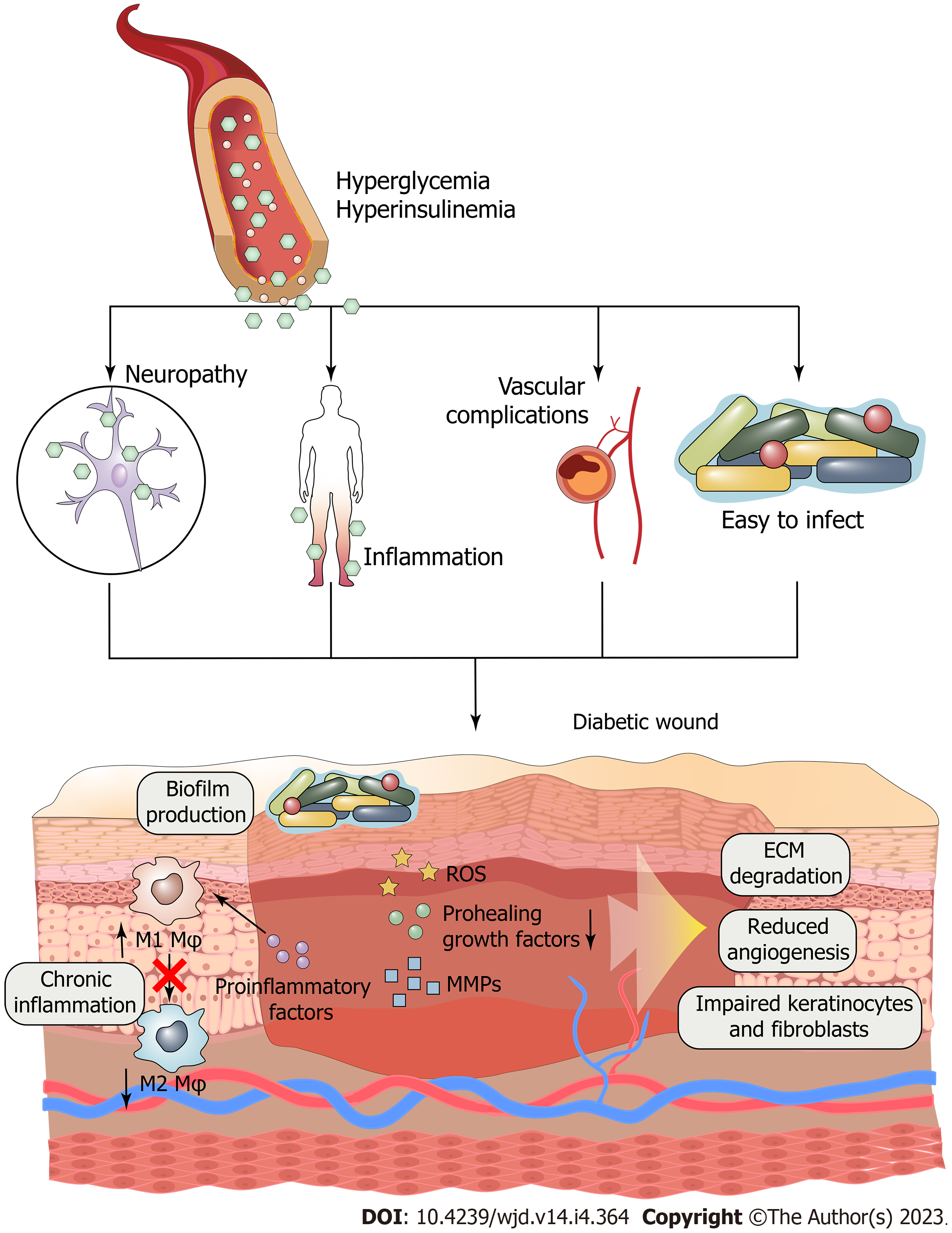Copyright
©The Author(s) 2023.
World J Diabetes. Apr 15, 2023; 14(4): 364-395
Published online Apr 15, 2023. doi: 10.4239/wjd.v14.i4.364
Published online Apr 15, 2023. doi: 10.4239/wjd.v14.i4.364
Figure 1 The wound healing process is generally divided into four stages: Hemostasis, inflammation, hyperplasia and reconstruction.
During the hemostatic stage, platelets will come into contact with collagen, resulting in platelet activation and aggregation; central thrombin triggers the formation of a fibrin network; the fibrin network strengthens platelet aggregation into a stable clot, effectively preventing bleeding. During the inflammatory phase, neutrophils and macrophages enter the wound to destroy bacteria and remove debris, and secrete growth factors, inflammatory factors, and chemokines that attract immune system cells to the wound to promote tissue repair. During the hyperplastic phase, granulation tissue grows and fills the wound, new blood vessels form, the wound shrinks, and epithelial cells gradually cover the surface of the wound. Finally, it enters the reconstruction stage, the fibrin of the granulation tissue gradually arranges regularly under the action of the pulling force, the epidermis gradually matures, M1 macrophages gradually transform into M2 macrophages, and inflammation and collagen synthesis are gradually inhibited.
Figure 2 Hyperglycemia and hyperinsulinemia are often the core causes of numerous problems in diabetic individuals.
These consequences add to the wound's aberrant features, like prolonged inflammation, poor tissue regeneration, slowed angiogenesis, etc. Moreover, the persistent breakdown of the skin barrier makes such wounds extremely susceptible to infection, which further hinders the healing process. Mφ: Macrophages; ECM: Extracellular matrix; ROS: Reactive oxygen species.
Figure 3 In the direct delivery system, growth factors are fully exposed to the wound environment and are easily proteolyzed.
In the delivery system built by biomaterials, growth factors can persist in the wound to promote healing. GFs: Growth factors.
- Citation: Zheng SY, Wan XX, Kambey PA, Luo Y, Hu XM, Liu YF, Shan JQ, Chen YW, Xiong K. Therapeutic role of growth factors in treating diabetic wound. World J Diabetes 2023; 14(4): 364-395
- URL: https://www.wjgnet.com/1948-9358/full/v14/i4/364.htm
- DOI: https://dx.doi.org/10.4239/wjd.v14.i4.364











